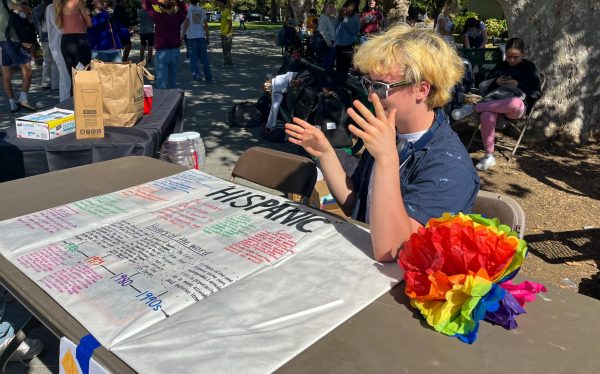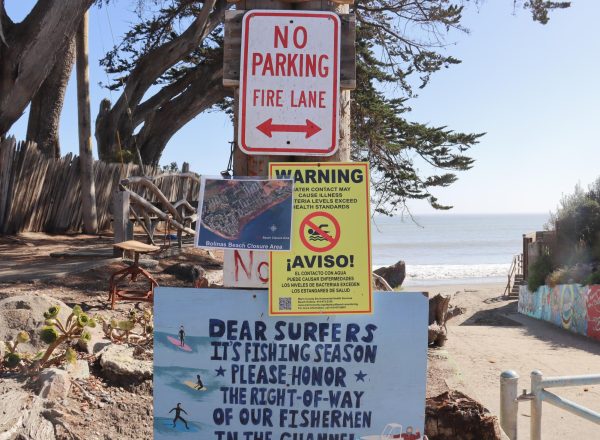Suicide barrier on Golden Gate Bridge to be completed by end of 2023
Construction of suicide netting on the Golden Gate Bridge began in 2018 and will be completed by the end of 2023.
Local authorities hope to prevent suicide-related deaths at the historic landmark, now exceeding 1600 since inception
Warning: This article discusses sensitive topics such as mental health and suicide. If you or someone you know needs support now, call or text 988 or chat 988lifeline.org.
In 2022, 22 individuals committed suicide on the San Francisco Golden Gate Bridge. The Golden Gate Bridge, Highway and Transportation District (GTD), eager to put an end to these tragedies, allocated 400 million dollars in 2018 to fund the installation of a suicide barrier on the Bridge. The initiative, which the GTD plans to complete by the end of 2023, may permanently end the Golden Gate Bridge’s reputation as a suicide destination.
The steel barrier, installed on the west and east sides of the historic landmark, will extend 20 feet out from the bridge. Because the barrier is not fully complete, the Golden Gate Bridge Patrol, in coordination with the California Highway Patrol, will continue to monitor attempts on the Bridge.
Paolo Cosulich-Schwartz is the Director of Public Affairs at GTD. According to Cosulich-Schwartz, outreach teams successfully intervened 160 attempted suicides in 2022. Cosulich-Schwartz says these interventions often require assistance from other organizations, such as the California Highway Patrol (CHP) and the San Francisco Fire Department.
“[Interventions] are a direct reflection of the work of our staff, our bridge patrol, who are monitoring the sidewalks 24/7, 365 days a year, our ironworkers, who often assist with interventions and rescues, as well as the California Highway Patrol,” Cosulich-Schwartz said.
While the CHP monitors much of the activity on the Golden Gate Bridge, the GTD trains Bridge Patrol Officers to intervene in the event of a suicide attempt. According to Cosulich-Schwartz, these officers receive crisis intervention training to learn how to talk people away from the edge. Bridge Patrol Officers are also given mental health resources to cope with traumatic instances they experience on the job.

Former CHP officer and suicide intervention expert Kevin Briggs saved over 200 people from jumping off of the Golden Gate Bridge in his 23 years of service. Despite the intensity of prevention attempts, Briggs made sure to remain calm while speaking to people in distress.
“I didn’t rush up there. I ask people’s permission to come up and chat with them. Then what I want them to do is talk, tell me about what has been going on,” Briggs said,“[I know] that I can’t fix everything, but we all know that when we’re upset and we’re not doing well, being [able] to talk without interruption allows us to vent.”
Since the construction of the Golden Gate Bridge in 1937, over 1,600 people have ended their lives by jumping off the bridge. While many of these deaths relate to mental health issues, Briggs says arcane myths about the bridge may be a contributing factor to the high number of suicide attempts at the Bridge.
“Some believe that traveling between the two towers will lead you to another dimension. This bridge has been romanticized as such that the fall from that frees you from all your worries and grief, and the waters below, will cleanse your soul,” Briggs said in a 2014 TED Talk about his experiences in suicide prevention.
“But let me tell you what actually occurs when the bridge is used as a means of suicide. After a free fall of four to five seconds, the body strikes the water at about 75 miles an hour. That impact shatters bones, some of which then puncture vital organs. Most die on impact. Those that don’t generally flail in the water helplessly, and then drown,” Briggs added.
Briggs retains traumatic memories of people jumping to their deaths, despite his efforts to talk them down. After he retired, Briggs found that speaking about these memories with a licensed psychiatrist helped him recover from the traumatic experience.
“I would ask you to talk to someone, talk to a mental health professional. There’s no weakness in that and there is no shame in that. I didn’t start getting better until I talked about myself and the issues I had been diagnosed with, [such as] PTSD and other issues,” Briggs said.
If you or someone you know needs support now, call or text 988 or chat 988lifeline.org.

Aler Giffin is a senior at Archie Williams High School and has been a part of the journalism program for three and a half years now. In his free time he...

Henry is a senior in high school, who loves to play tennis and enjoys spending time outdoors hiking.

Henry is a junior and in his second year of journalism. He is proud to be on two different swim teams for 10 years, Sleepy Hollow and North Bay Aquatics....

Willy is a junior and is in his second year of journalism. He is fluent in French (Bonjour!) and really enjoys photography. He goes to the gym all the...







